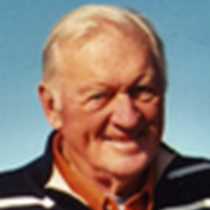The Steppes of Eastern Washington & Oregon
There’s something mysterious about the Columbia River’s shoreline. Cruising through these river waters – often posing as reservoirs between great dams – one is hard-pressed to see much human activity. A bridge or two, railroad tracks, a few buildings designed for agricultural purposes, several small towns astride lonely valleys of wind-blown loess and basalt walls. These monuments define the Steppes or gently rolling high desert of the Columbia Plain.
Naturalists and guests on deck saw western grebes, great blue heron, comical-looking mule deer and representatives of the ever-present gull population. Double-crested cormorants stood guard on the walls of dams while American coots and American widgeons moved near the shore. Today’s menagerie also featured large contingents of Canada geese. When spotting a few white pelicans, John James Audubon’s favorite American bird, lines from Dixon Lanier Merrit in 1910, came to mind:
“What a marvelous bird the Pelican,
His bill can hold more than his bellican.”
This morning, I opened the Lewis & Clark theme with a presentation outlining forces or influences that led to Thomas Jefferson’s decision to send Meriwether Lewis westward: e.g. the Enlightenment; the search for peltry, especially sea otter skins; imperialism; the Louisiana Purchase; and the personality and curiosity of Jefferson himself. The Expedition became part of an American parade: “discovery” of the Columbia River by Rhode Islander Robert Gray; the Corps of Discovery’s arrival five years later (1805); the two Astor parties and tiny settlement of Fort Astoria; an influx of missionaries, naturalists and pioneers – virtually all American citizens.
Today’s cruise also offered a popular treat – daytime opportunities to experience the Sea Bird’s transit of the world’s highest lift locks.
There’s something mysterious about the Columbia River’s shoreline. Cruising through these river waters – often posing as reservoirs between great dams – one is hard-pressed to see much human activity. A bridge or two, railroad tracks, a few buildings designed for agricultural purposes, several small towns astride lonely valleys of wind-blown loess and basalt walls. These monuments define the Steppes or gently rolling high desert of the Columbia Plain.
Naturalists and guests on deck saw western grebes, great blue heron, comical-looking mule deer and representatives of the ever-present gull population. Double-crested cormorants stood guard on the walls of dams while American coots and American widgeons moved near the shore. Today’s menagerie also featured large contingents of Canada geese. When spotting a few white pelicans, John James Audubon’s favorite American bird, lines from Dixon Lanier Merrit in 1910, came to mind:
“What a marvelous bird the Pelican,
His bill can hold more than his bellican.”
This morning, I opened the Lewis & Clark theme with a presentation outlining forces or influences that led to Thomas Jefferson’s decision to send Meriwether Lewis westward: e.g. the Enlightenment; the search for peltry, especially sea otter skins; imperialism; the Louisiana Purchase; and the personality and curiosity of Jefferson himself. The Expedition became part of an American parade: “discovery” of the Columbia River by Rhode Islander Robert Gray; the Corps of Discovery’s arrival five years later (1805); the two Astor parties and tiny settlement of Fort Astoria; an influx of missionaries, naturalists and pioneers – virtually all American citizens.
Today’s cruise also offered a popular treat – daytime opportunities to experience the Sea Bird’s transit of the world’s highest lift locks.



